
These glass-plate photographs depicting life in Japan were collected in Yokohama during the years 1908–1918 by Herbert Geddes, a manager for a Canadian import-export company.
Originally, these types of photographs were sold as postcards or souvenirs to foreign tourists that had an interest in Japan.
The subjects of these photos include civil structures such as temples, bridges, and streets; images of labor such as silk factories, rice cultivation, farming, and portraits of regular people providing an intimate view into Japan’s bygone era.

Crowd-filled street lined with banners and lanterns.
In 1868 the Tokugawa shôgun (“great general”), who ruled Japan in the feudal period, lost his power and the emperor was restored to the supreme position.
The emperor took the name Meiji (“enlightened rule”) as his reign name; this event was known as the Meiji Restoration.
The Meiji period saw Japan’s transformation from a feudal polity into a modern industrial state, along with its emergence from isolation into the ranks of major world powers.

Interior shot of two geishas asleep in bedding on floor mats; musical instrument, fan and implements for tea ceremony nearby.
During the early years of the Meiji period, feudal domains were abolished, the samurai class was phased out, a national education program was implemented, and major institutions (military, banking, industrial production, taxation, etc.) were transformed along Western models.
In 1889, a new constitution was approved. The constitution invested the emperor with full sovereignty, declaring him “sacred and inviolable”.
In spite of its emphasis on the emperor, however, the constitution marked a genuine step toward popular participation.
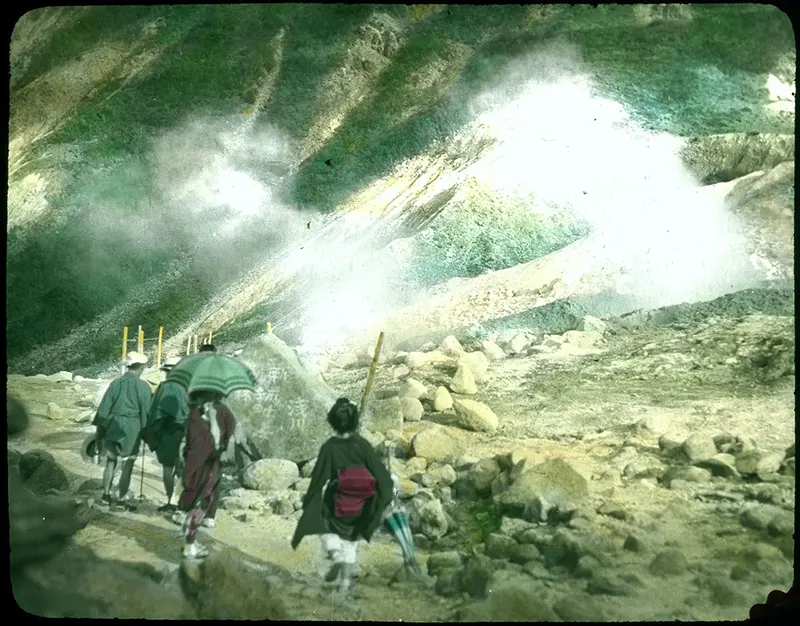
Japanese people in local attire hiking through mountains.
Japan’s victories in the Sino-Japanese War (1894-95) and the Russo-Japanese War (1904-05), along with Japan’s annexation of Taiwan (1895) and Korea (1910) brought international recognition of Japan’s sphere of hegemony in Northeast Asia.
But with inroads by Western liberalism and the fear of unrest in the now-industrialized urban centers, Meiji leaders started focusing on upholding Japan’s “traditional” institutions.
Emperor Meiji, now associated with success in war and always the symbol of modernization, was therefore raised to new heights of reverence.
Textbooks in the compulsory school system course in ethics increasingly emphasized national and military heroes as models.

Lake side resort.
The family systems, formally established by an 1898 supplement to the Civil Code, took the samurai family as the norm for the entire nation. The commonwealth was now described as a “family state” in which political and familiar loyalties reinforced each other.
The Home Ministry undertook to place the native cult of Shinto at the service of the government. The Meiji period thus left succeeding generations of Japanese with an ambiguous heritage.
By the time of the emperor’s death in 1912, Japan stood as a model of rapid and largely successful modernization.
In less than half a century it had developed from an isolated, semifeudal society into a modern state that had secured for itself a prominent place in the world community.

Large silk factory.
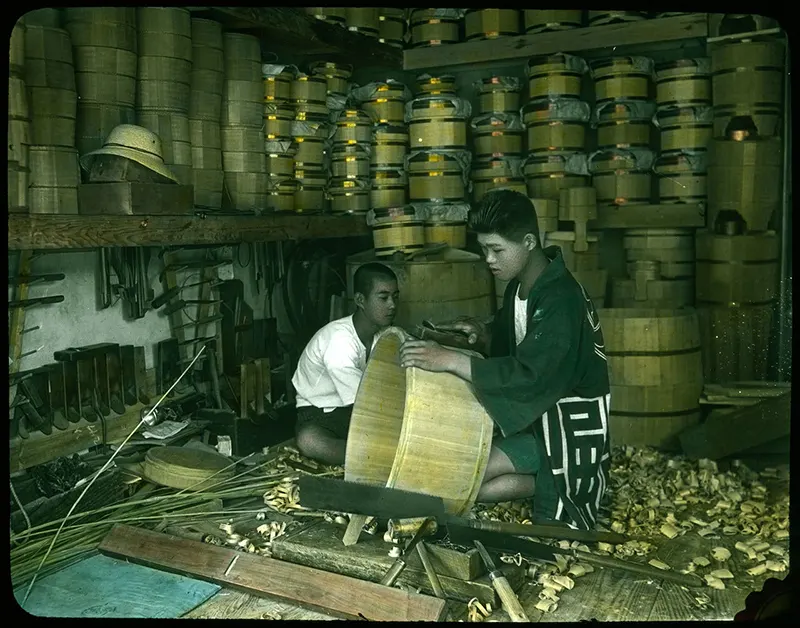
Making wooden barrels.

Man beginning to carve lantern from block of stone.

Man carving ivory statue of mother and child.

Man painting parasols; painted lanterns in background.
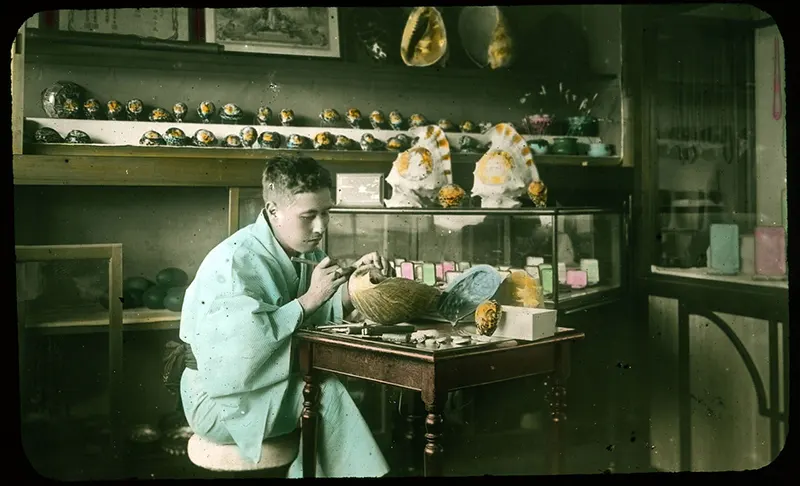
Man painting shells.

Man using handsaw on tree trunk.

Man with rickshaw on tall tree lined dirt road.

Men carving wooden furniture of intricate design.

Men making clay moulds for giant masks.

Men preparing for sumo wrestling outdoors.
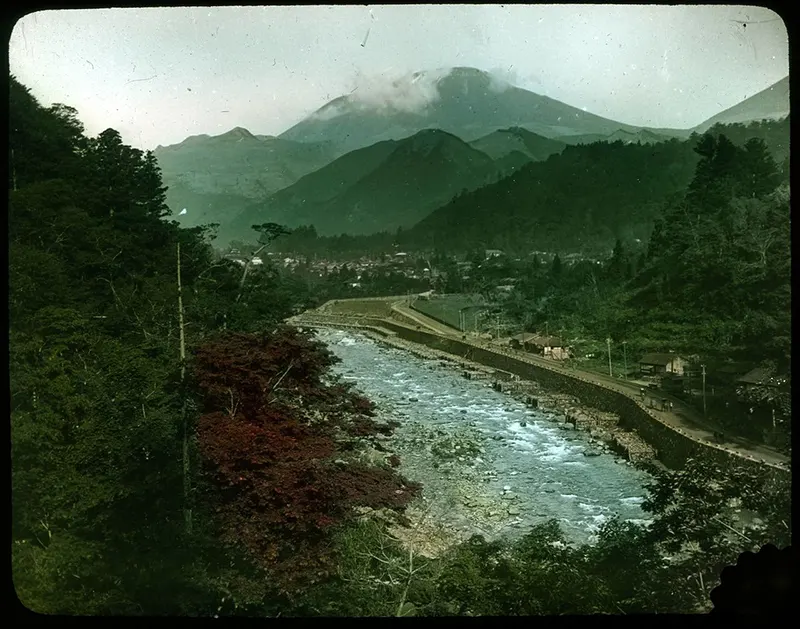
Mount Nantai and Daiya River.
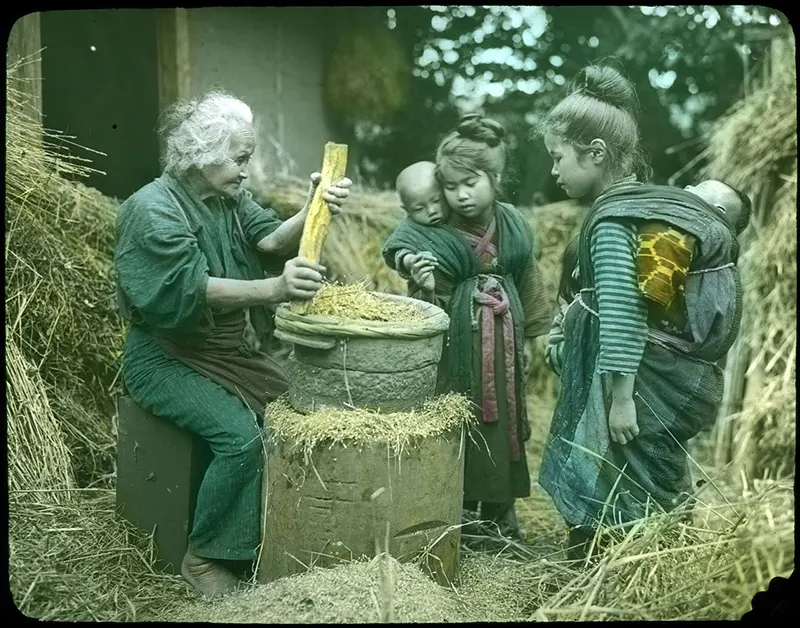
Old woman with raised grinding stone; two little girls carrying babies on their backs looking on.

Open air ceramic shop.

Painting vases. (slide cracked).

People in boats on waterways through rice fields; snow-covered mountain in background.
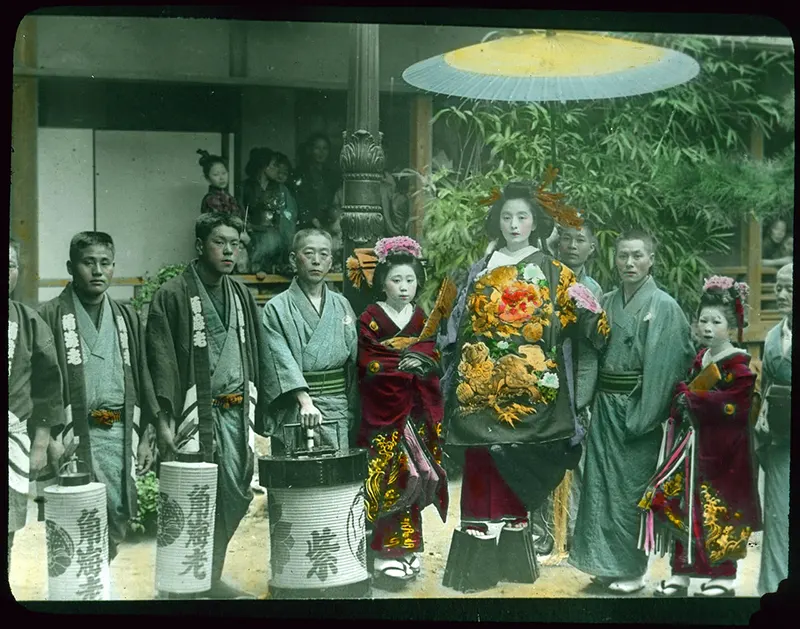
People in special attire, with lanterns, posing for photograph.

People wading in sea; fisher with hand net; boats in background.
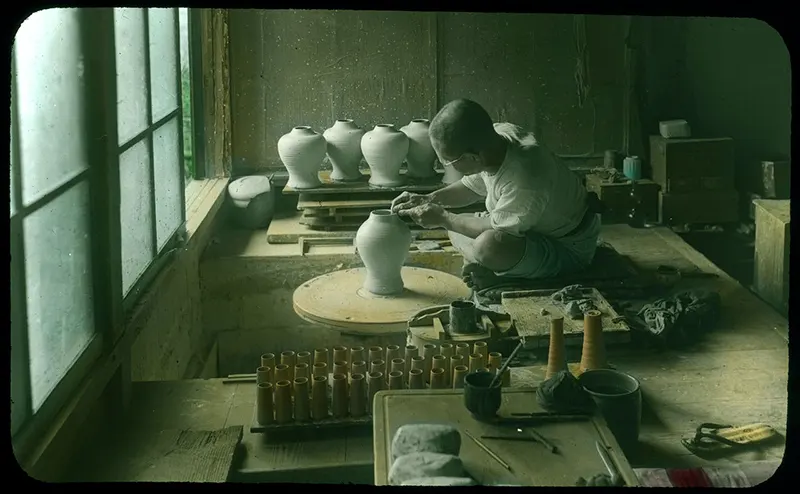
Potter making vase on wheel.

Rice being poured into a wooden mechanical hopper.
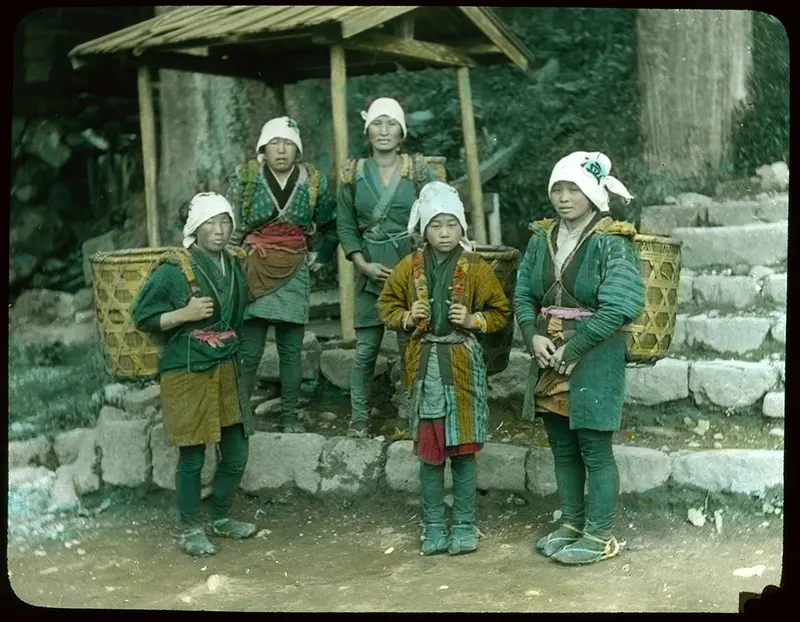
Rural women in local attire carrying large baskets on their backs.
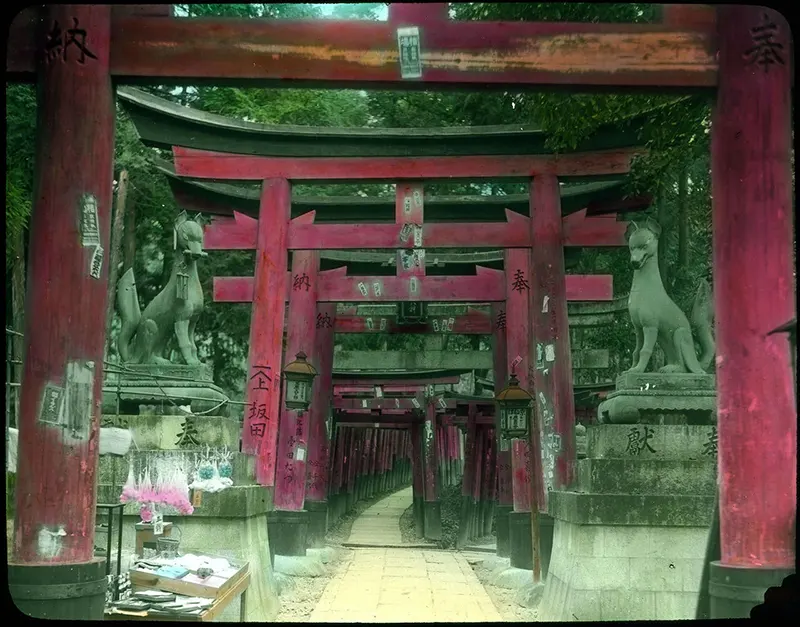
Series of red wooden gateways; stone animals on pedestals between first and second gateway.
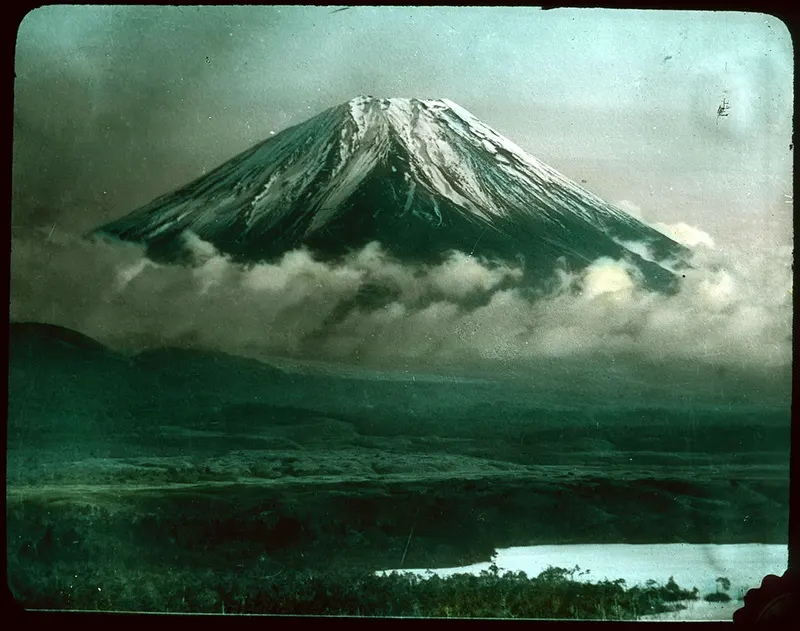
Snow-covered mountain (Mt. Fuji ) wreathed with clouds; low ground leading down to water in foreground.

Taking Silk From Cocoons.
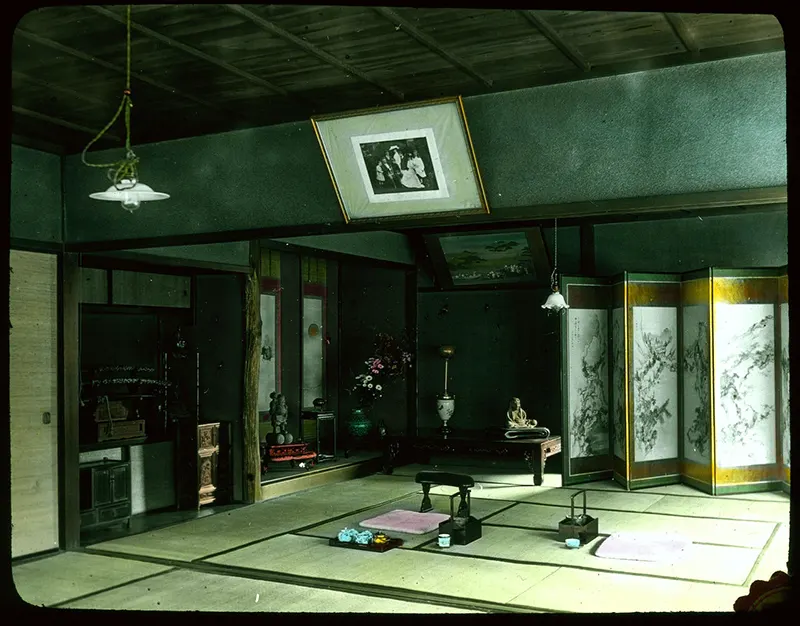
Tea implements in centre of richly furnished room.
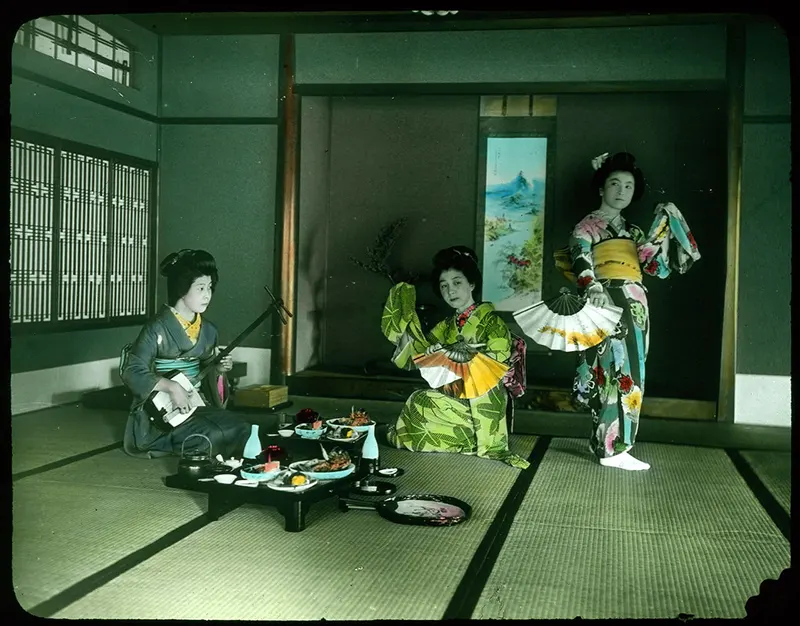
Three women with fans, musical instrument and a table set with food.

Tinsmith at work.

Two (priests ) outside shrine.
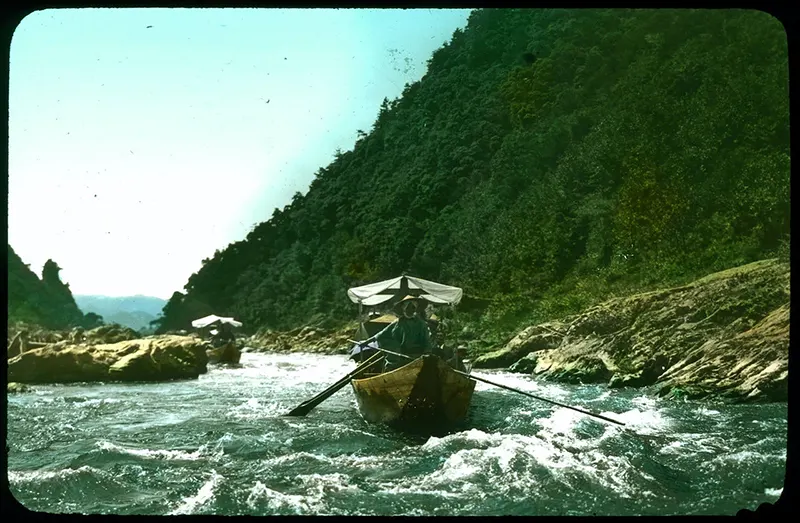
Two boats with cloth canopies being rowed along river; wooded mountain on one side; rushing water in foreground.

Two men landing boat on beach.

Two young women in Kimonos, one standing, one seated on wooden bench outside open greenhouses filled with blooming flowers.

Woman separating rice from chaff with steel comb.
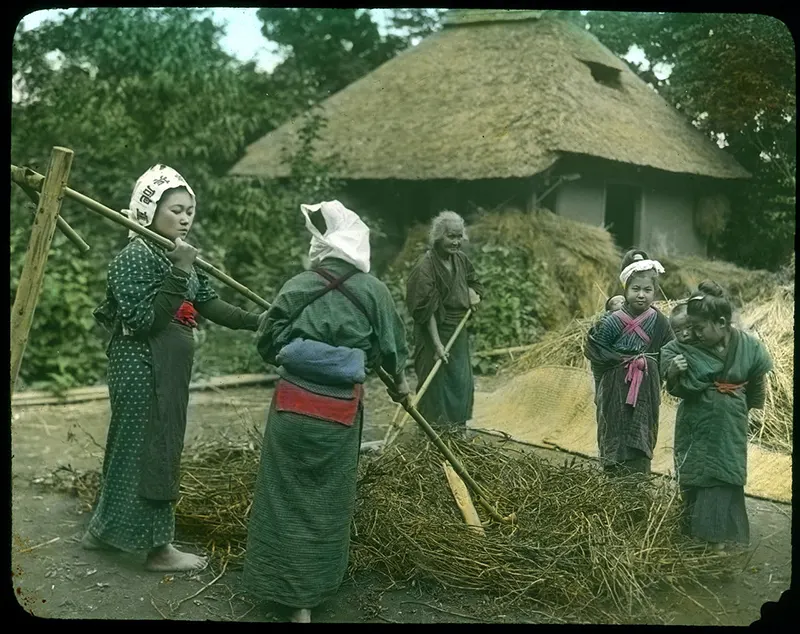
Women at work with children watching.

Women harvesting rice.

Women planting rice.
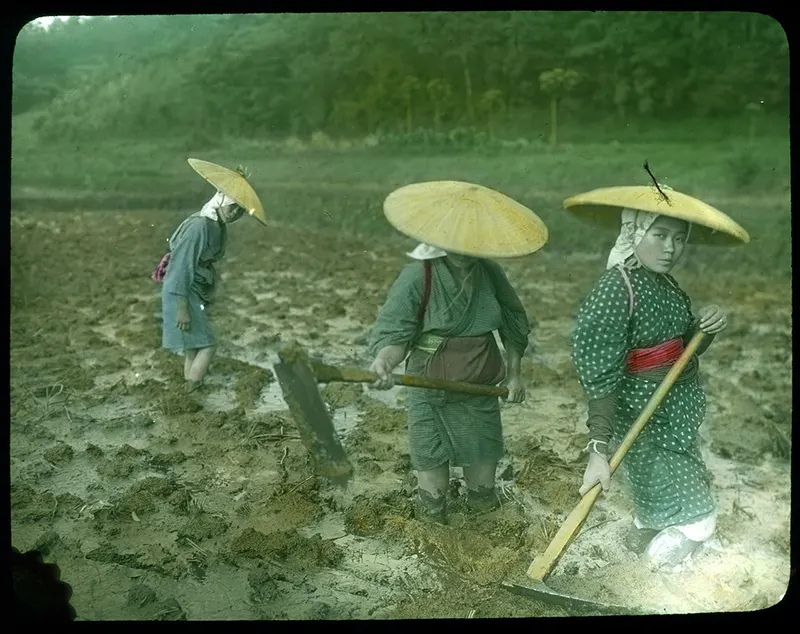
Women preparing rice field in mud.
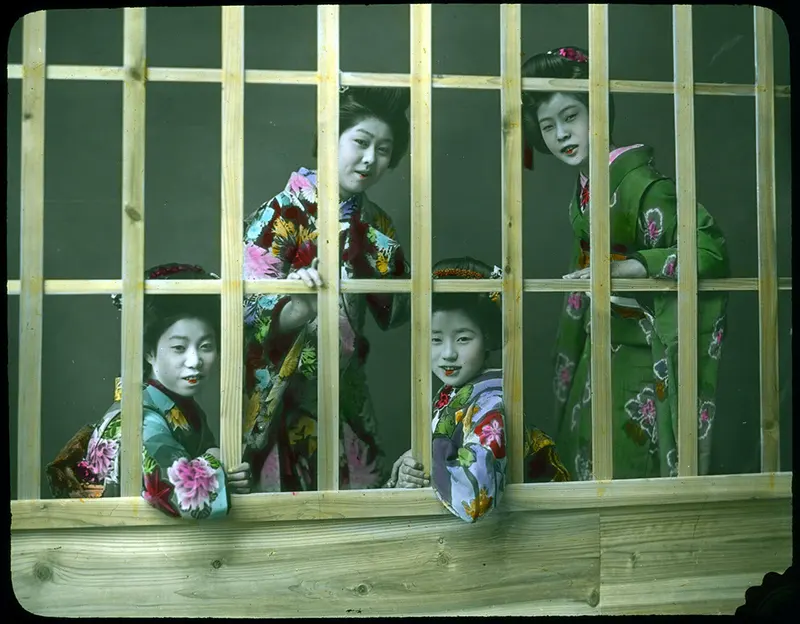
Four women smiling and leaning through openings in lattice work.

(Photo credit: Flickr: The Commons / University of Victoria Libraries / Wikimedia Commons).
Updated on: November 22, 2024
Any factual error or typo? Let us know.



